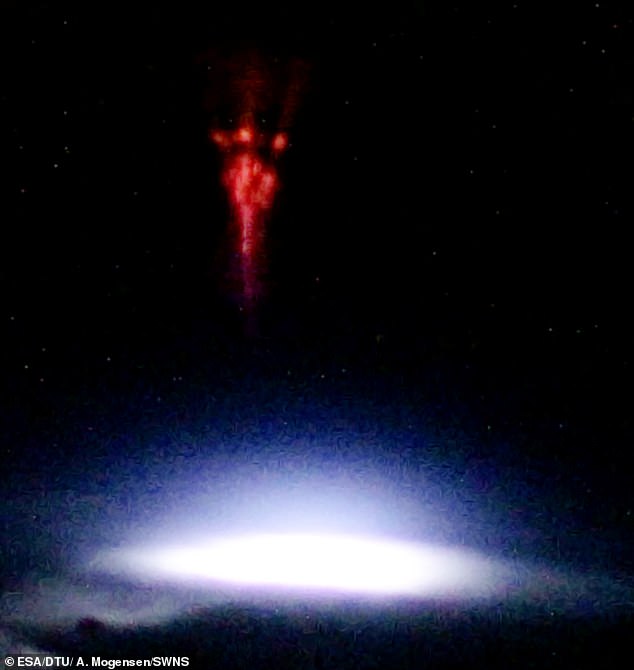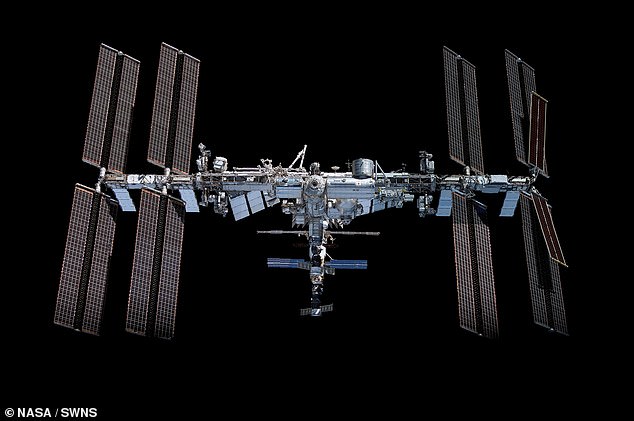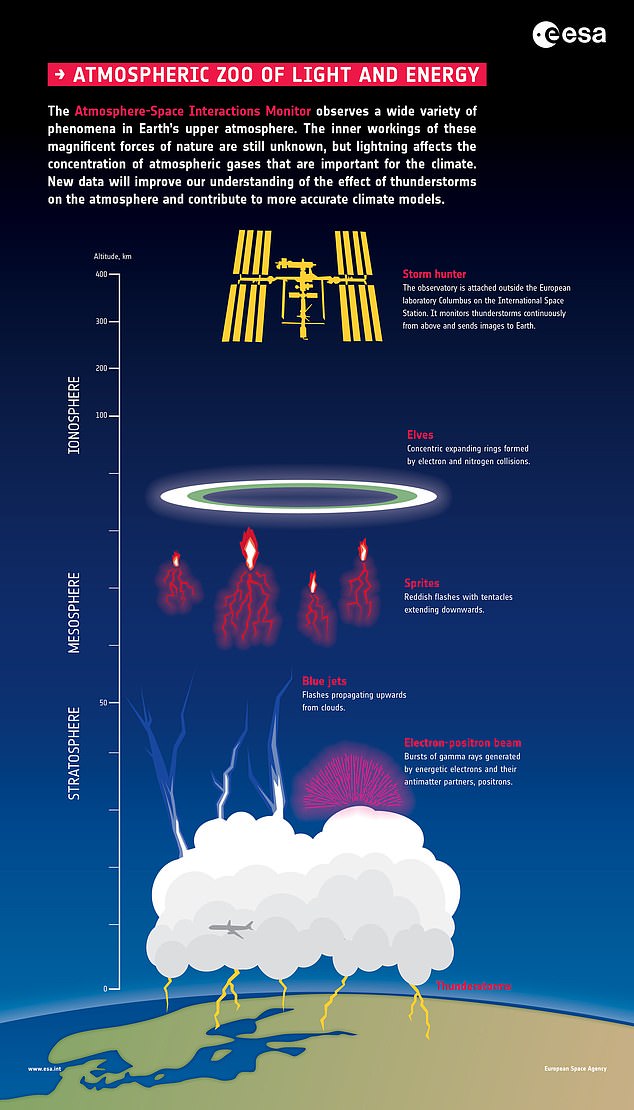Mysterious red lights glowing in Earth’s atmosphere are captured by astronauts in space
A NASA astronaut has captured photographs from a window aboard the International Space Station (ISS) of eerie, glowing red lights hanging in Earth’s atmosphere.
The stunning image, taken on June 3 by NASA’s SpaceX Crew-8 mission commander Matthew Dominick, captured the quick flash of a weather phenomenon known as “red sprite” lightning.
Red sprites are known to occur high above thunderclouds, in a part of the upper atmosphere called the mesosphere, which extends as far as 85 kilometers above the Earth’s surface.
The image showed blood-red energy beams glowing vertically off the coast of South Africa.
A stunning photo taken this spring by NASA SpaceX Crew-8 mission commander Matthew Dominick captured the quick flash of a weather phenomenon known as a “red sprite.” The astronaut photographed the eerie glow (above) from the International Space Station

Last December, European Space Agency astronaut Andreas Mogensen also captured an incredible photo (above) and a timelapse sequence of a red sprite
NASA hopes the ethereal image of the sprite will encourage skywatchers on Earth to submit their own “pictures of sprites” and other [Transient Luminous Events or] TLEs for NASA’s citizen science project Spritacular.
The US space agency hopes this crowdsourced database, which will enter its third year of operation in October, will go a long way toward helping scientists understand these rare phenomena.
“A few weeks ago I got extremely lucky when I captured a timelapse of a thunderstorm off the coast of South Africa,” Dominick wrote in a post on the social site X.
“One of the frames in the timelapse showed a red sprite,” said Dominick, who previously served as a Navy test pilot and fighter aircraft commander before joining NASA.
“If there are any experts in catching red sprites, I’d love to hear tips on how we can catch more of them,” he added.
‘Of course you can count on thunderstorms, but I think the stronger the storm the better.’
Space physicist Dr. Burcu Kosarwho serves as principal investigator for Spritacularnoted that the project hopes to connect such accidental photographers of phenomena as red sprites with the scientists who study them
“People take beautiful pictures of sprites, but they are sporadically shared on the Internet,” she noted. “Most of the scientific community is unaware of these pictures.”
“Spritacular will fill that gap,” said Dr. Kosar, who works with NASA’s Goddard Space Flight Center in Greenbelt, Maryland.
Dominick captured his image of the striking red sprites from a vantage point hundreds of miles above these high-altitude electrical discharges, orbiting Earth on the International Space Station (ISS) 250 miles above the Earth’s surface.

Dominick captured his image of the striking red sprites from a vantage point hundreds of miles above these high-altitude electrical discharges, orbiting the International Space Station (above) 250 miles above Earth’s surface.

NASA astronaut Matthew Dominick (self-portrait above) previously served as a Navy test pilot and fighter pilot commander before joining the U.S. space program

Red sprites are electrical flashes of light that occur above very active thunderstorms. (Above is an infographic from the European Space Agency on the generation of these spindles of red light)
A NASA press release about the new image further explained that “Transient Luminous Events (TLEs), including red sprites, are colorful bursts of energy that appear above storms as a result of lightning activity within and below storms on Earth.”
The space agency noted that these and other TLEs are most often caught on camera through these types of happy accidents, usually while taking time-lapse footage of Earth using a lens with a long focal length.
On the ISS, these time-lapse images are typically taken by science instruments mounted outside the space station, such as the Atmosphere-Space Interactions Monitor (ASIM).
ASIM’s sensors collect a wide range of data for scientific research on Earth, including cameras, photometers, and X-ray and gamma-ray detectors.
